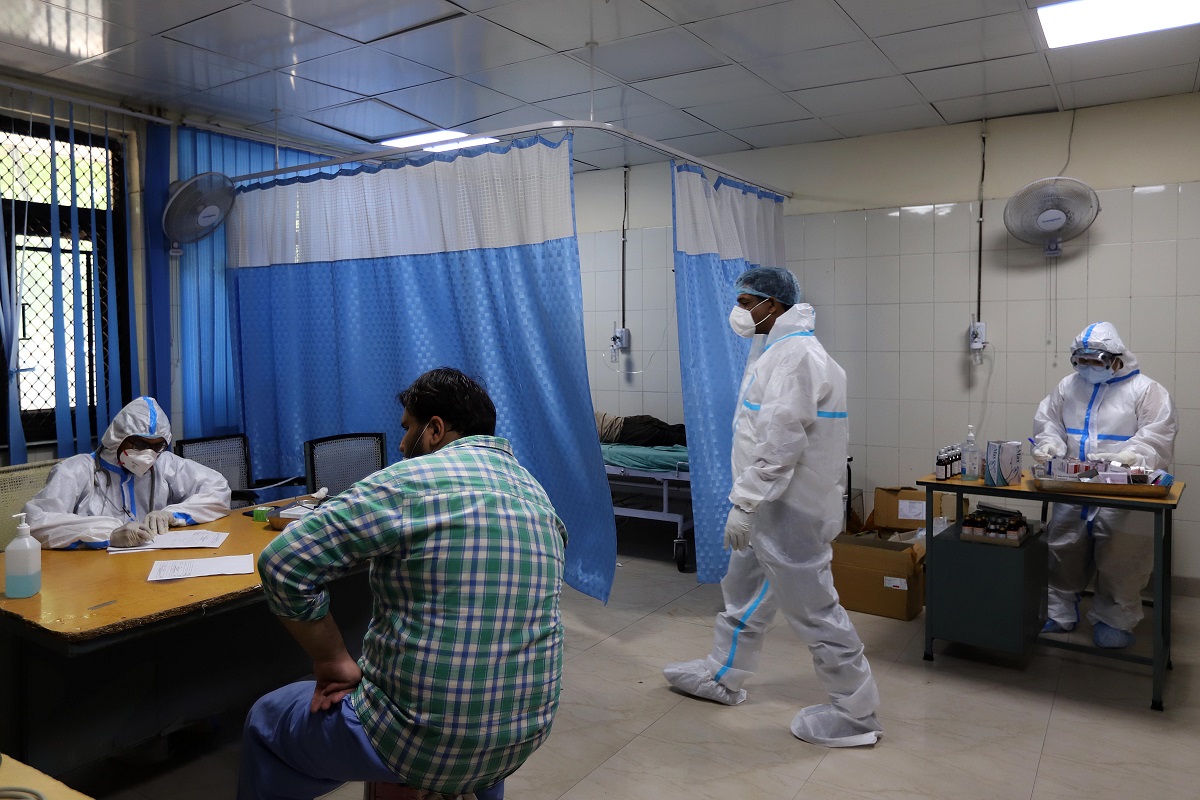Still unexplained
The hunt for the origins of Covid-19 has for the past four years been a tangled web of politics, power struggles, and international finger-pointing.
‘Clinical Management Protocol: COVID-19’ released by the Health Ministry says, ‘Loss of smell (anosmia) or loss of taste (ageusia) preceding the onset of respiratory symptoms has also been reported,’ among the Coronavirus patients which includes other symptoms such as fever, cough, fatigue, shortness of breath, expectoration, myalgia, rhinorrhea, sore throat and diarrhoea.

(Photo: SNS)
The central government has added symptoms of sudden loss of smell and taste, clinically called anosmia and ageusia respectively in the COVID-19 management guidelines published for the health professionals which includes nine other signs as well.
“Clinical Management Protocol: COVID-19” released by the Health Ministry says, “Loss of smell (anosmia) or loss of taste (ageusia) preceding the onset of respiratory symptoms has also been reported,” among the Coronavirus patients which includes other symptoms such as fever, cough, fatigue, shortness of breath, expectoration, myalgia, rhinorrhea, sore throat and diarrhoea.
People above 60 years of age are majorly at risk of catching the disease. While, those with underlying non-communicable diseases such as diabetes, hypertension and cardiac disease, cancer and chronic kidney disease among others, are also at high risk of Coronavirus infection.
Advertisement
“Older people and immune-suppressed patients in particular may present typical symptoms such as fatigue, reduced alertness, reduced mobility, diarrhoea, loss of appetite, delirium. Children might not have reported fever or cough as frequently as adults,” said the Health Ministry.
“As per data from Integrated Health Information Platform (IHIP)/Integrated Disease Surveillance Programme (IDSP) portal, case investigation forms for COVID-19 (15,366), the details on the signs and symptoms reported are (as on June 11, 2020), fever (27 per cent), cough (21 per cent), sore throat (10 per cent), breathlessness (8 per cent), weakness (7 per cent), running nose (3 per cent) and others (24 per cent),” says the guideline.
A patient with acute respiratory illness who is suffering from fever and at least one sign of respiratory disease like cough or shortness of breath and a history of travel or residence in a location reporting community transmission of COVID-19 during the 14 days prior to symptom onset can be a suspected case of Coronavirus, says the ministry guidelines.
The Georgia based Centers for Disease Control and Prevention (CDC), the leading US public health department which is involved in keeping an eye on global diseases and their cure in laboratories, had said on April 28 that the COVID-19 symptoms include chills, muscle and body aches, headache and new loss of taste or smell, the features which were not included in the WHO website at that time.
Meanwhile, India on Saturday crossed 3 lakh-mark as it reported the highest single-day spike of 11,458 new Coronavirus cases taking the total tally to 3,08,993. As many as 386 deaths were recorded in the last 24 hours taking the total number of fatalities to 8,884, according to the Ministry of Health. Of the total cases, 1,45,779 are active cases and 1,54,330 people have been cured.
Also, the doubling time of Coronavirus cases in India has improved to 17.4 days currently from 15.4 days a couple of weeks ago, the Union health ministry said on Friday.
Meanwhile, India is ranked fouth globally in the total cases of novel Coronavirus reported after Russia (5,10,761), Brazil (8,28,810) and the US (20,46,643).
The global number of COVID-19 cases has increased to over 7.6 million, while the death toll surged past 425,000, according to the Johns Hopkins University.
As of Saturday morning, the overall number of cases stood at 7,632,377, while the deaths increased to 425,385, the University’s Center for Systems Science and Engineering (CSSE) revealed in its latest update.
The World Health Organization (WHO) said that it is concerned that many countries, particularly the global south, are still on the upswing of the COVID-19 pandemic, and again called for global solidarity to overcome difficulties for “over 100 years.”
Advertisement